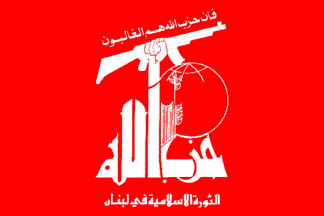Cheney Kong's Personal No-Fly Zone
 NYT December 4, 2005
NYT December 4, 2005Don't Fly Over Cheney, Weekend Pilots
By Matthew Wald
Anyone who doesn't know what Mickey Mouse, Saddam Hussein, Dick Cheney and the odd volcano have in common better not be a pilot. It's the no-fly zone.
Mr. Hussein got his without asking. The governors of several states wanted such zones over their nuclear reactors but were turned down. Same with the mayor of Chicago, who wanted one for the Sears Tower.
Last week, private pilots complained that the no-fly zone for the vice president's new home on the Chesapeake Bay - imposed indefinitely the week before - severely clipped their wings.
So who rates a no-fly zone, and how do you get one?
The zones are most commonly designated "temporary flight restriction," or T.F.R., and established by the Federal Aviation Administration, sometimes on its own initiative and sometimes on someone else's. The zone for Mr. Cheney's house in St. Michaels, Md., extending out a nautical mile in radius and up 1,500 feet, was established "at the request of another government agency," said an F.A.A. spokeswoman, Laura J. Brown, who would not identify the other agency. But around Washington, the agencies that make up the Interagency Airspace Protection Working Group - Ms. Brown's, as well as the F.B.I., the Secret Service, the Transportation Security Administration, the Coast Guard and Norad - have a role.
Exactly how the government determines that the vice president is a more vulnerable target, or more valuable, than a nuclear plant, is not always clear to outsiders. "You have to balance the security need with the best available information, and being able to keep the airspace clear for commerce and everything else," Ms. Brown said.
The Republican and Democratic national conventions rate zones; so do big chemical spills, space-shuttle launchings, Mount St. Helens (to protect the plane, not the volcano), the occasional very big highway accident and, of course, the Disney theme parks.
Campaign stops by presidential candidates often rate a T.F.R. There are zones around Camp David and around the Bush ranch in Texas, but those get bigger when Mr. Bush is actually there.
Mr. Cheney's T.F.R. breaks ground, says the Aircraft Owners and Pilots Association, because it is in effect even when he is not in residence. Chris Dancy, a spokesman for the group, noted that all previous T.F.R. zones for vice presidents were in effect only when the vice president was there.
The private pilots object mostly because it's so easy to stray into the zones. Violations nationwide occur more than 1,000 times a year. "There's not a big red line drawn across the landscape that a pilot can see," Ms. Brown noted.
And why are their itty-bitty planes a problem anyway, the private pilots wonder? A bumper sticker seen in airport parking lots sums up their derision: "I Fly a Cessna 150, the Mighty Airplane that Brings Cities to Their Knees! Fear Me ... 2 Seats, 26 Gallons of Gas, 100 HP and 90 Knots of Screaming Terror!"







<< Home